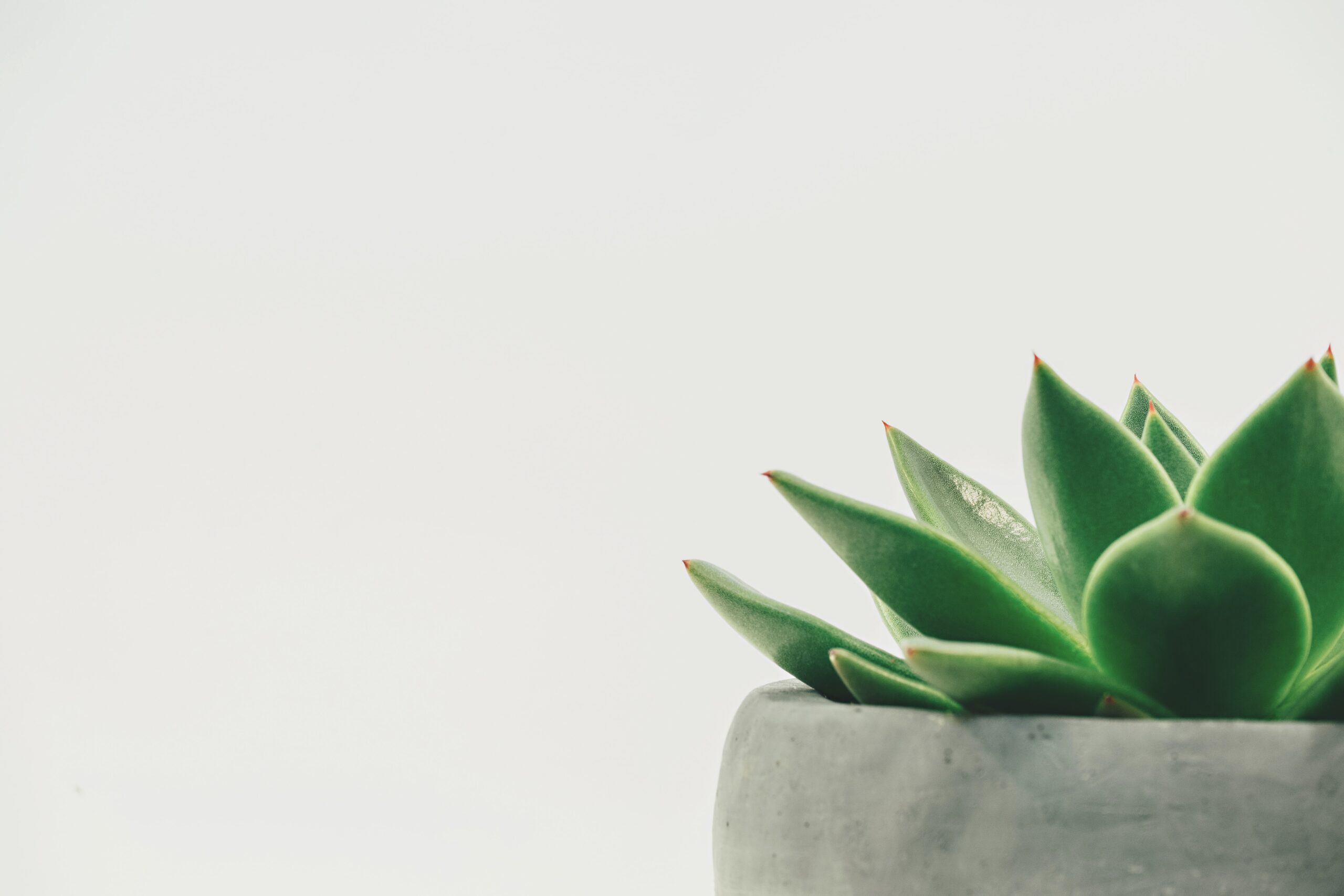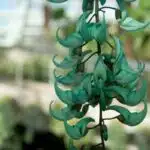One of the most popular houseplants is the jade plant, and for a good reason. Its attractive evergreen foliage and easy maintenance make it ideal for those who don’t have a green thumb. While caring for a jade plant can be simple, there are certain nuances to consider that will help ensure your plant thrives in its new home.
Despite its reputation as an easy-care houseplant, there is more to jade plant care than meets the eye. The key to success lies in understanding how much sunlight and water your particular jade needs, as well as what kind of soil it prefers. With just a few tips you can keep your jade healthy and thriving indoors.
When considering adding a jade plant to your home, don’t let misconceptions about their care scare you off! While they may require more attention than other types of plants, with some knowledge of their specific needs you can keep them looking beautiful all year long. Read on to learn more about how to optimize indoor sunlight, water, soil and growing tips when caring for a jade plant.
What Is A Jade Plant?
A jade plant is a succulent that has been popular for centuries as an ornamental houseplant. Its thick, fleshy leaves are a deep green color and its branches are often braided together for decoration. It can also produce small white or pink flowers when it blooms. These beautiful plants have made them a favorite of gardeners around the world.
Growing a jade plant can be relatively easy with the right care. Indoor sunlight, water, soil, and specific growing tips should be considered to ensure a healthy jade plant. Knowing how and when to provide these conditions is essential for its wellbeing.
Caring for a jade plant requires some attention but doesn’t demand too much work. Providing adequate light, watering regularly, and using well-draining soil are all key factors to its success – you’ll be able to enjoy your jade plant for years to come! With this knowledge in hand, you’re ready to answer the next question: Where should you place your jade plant?
Where Should You Place A Jade Plant?
A jade plant is a beautiful, low-maintenance houseplant that can thrive in the right environment. But it’s important to place your jade plant correctly to ensure its success.
The best place to position your jade plant is one with indirect sunlight. This means a spot away from direct sunlight, but still in an area that receives some natural light. If you don’t have this kind of space available, you can also use artificial lighting. Just make sure that the plant is getting enough light each day.
When setting up your jade plant, make sure you also consider the temperature and humidity of the room. The ideal temperature range for a jade plant is between 65°F and 75°F with moderate humidity, so avoid placing it near any heat sources or air conditioning units.
Now that we’ve covered where to put a jade plant, let’s look at how much sunlight it needs to thrive.
How Much Sunlight Does A Jade Plant Need?
It’s like living in a desert! That’s how much sunlight your jade plant needs to thrive. It’s absolutely essential for the health and longevity of your precious plant. The amount of direct sunlight a jade plant needs is almost unimaginable!
For optimal growth, it requires several hours of direct sunshine each day. If you don’t get enough sunshine where you live, don’t worry; you can also supplement with artificial light sources such as fluorescent bulbs. This might sound like a lot, but it’s worth it to keep your beloved jade looking its best.
When positioning your jade plant, make sure to place it near an east-facing window or an area that receives plenty of indirect light throughout the day. With the right amount of sunlight, you’ll be rewarded with lush foliage and even blooms!
How Much Water Does A Jade Plant Need?
When it comes to caring for a jade plant, one of the most important considerations is how much water they need. Surprisingly, jade plants don’t require as much water as you might think – in fact, overwatering them can actually be detrimental to their health. It’s important to understand the amount of water your jade plant needs in order to keep it happy and healthy.
The good news is that jade plants don’t need to be watered frequently – only about once or twice a month. When you do decide to water your jade plant, make sure you give it a deep soak so that the soil is evenly moistened. You should also avoid pouring too much water into the pot as this can lead to root rot and other issues.
You should also take extra caution when watering during the winter months – since the plant isn’t growing much during this time, they don’t need as much water and you should reduce watering significantly. By getting a feel for how often and how much you should be watering your jade plant, you can ensure that it’s getting all the care it needs! With proper care and attention, your jade plant will stay happy and healthy for years to come.
Now that we know how much water our jade plants need, let’s dive deeper into what kind of soil is best for these plants!
What Soil Is Best For A Jade Plant?
The jade plant is a symbol of renewal and growth – but to ensure it will thrive, you need to know the right soil to use. To make sure your jade plant gets its best start, let’s look at which soil is best for it.
For jade plants, well-draining potting soil that is light with plenty of air pockets is ideal. Aim for a mix that has good water retention and drainage capabilities. Adding perlite or pumice to the mix can help to achieve these effects by improving drainage and preventing compaction of the soil. Alternatively, you can purchase a pre-mixed potting soil specifically designed for succulents.
When selecting a soil for your jade plant, always choose one that does not contain any added fertilizers or synthetic chemicals – these could damage the delicate roots of your plant. Finally, regular repotting is important as it helps to keep the soil fresh and can help prevent root rot caused by over-watering.
Now that we know what kind of soil is best suited for a jade plant, how often should you fertilize it?
How Often Should You Fertilize A Jade Plant?
Fertilizing a jade plant is an important part of its care. It’s essential to provide your jade plant with the right type and amount of fertilizer to keep it healthy and growing strong. So, how often should you fertilize a jade plant?
Generally, you should fertilize your jade plant once or twice a year, in spring and summer. However, if your soil is particularly nutrient-deficient or if the plant is actively growing, then you may need to fertilize more frequently. The best time to fertilize is after watering, as this helps the nutrients reach the roots faster.
When it comes to what kind of fertilizer to use for a jade plant, slow-release fertilizers are usually preferred over liquid ones. This type of fertilizer will provide steady nutrition over time without overfeeding the plant. Additionally, look for products that contain micronutrients like iron, zinc and magnesium – these will help promote healthy growth in your jade plant.
With proper fertilizer and regular watering, you can give your jade plant the nutrients it needs for thriving growth. Now let’s move on to see how else you can encourage a jade plant to grow...
How Can You Encourage A Jade Plant To Grow?
Coincidentally, the very question I was about to ask is how can you encourage a jade plant to grow? Knowing the proper care for this houseplant is key in ensuring it has optimal growth. First and foremost, adequate sunlight is essential for any plant’s growth. A jade plant should be placed in an area where it receives at least four hours of indirect sunlight per day. It can also benefit from an occasional misting or being placed near a humidifier.
Next, it’s important to make sure the soil your jade plant is planted in is well-draining as this will help it absorb water more effectively and promote healthy root growth. Additionally, water your jade plant when its soil feels dry to the touch and avoid overwatering as this can cause root rot. Fertilizing every two months during the spring and summer months with a balanced fertilizer can help sustain its growth as well.
Finally, pruning your jade plant regularly encourages healthy new growth while also helping to maintain its shape and size. That being said, don’t take too much off at once as this may damage the roots or leaves of the plant. By following these tips on how to encourage a jade plant’s growth, you’ll be able to ensure that it stays healthy and happy for years to come! With that in mind, let’s move on to whether or not you should repot your jade plant...
Should You Repot A Jade Plant?
Repotting a jade plant can be beneficial for its health and growth. If the plant has become root-bound or if you want to refresh the soil, it’s important to repot correctly. This includes using fresh, well-draining soil and a pot with adequate drainage holes. It’s also critical to give the jade plant some time to adjust after repotting.
When repotting, it’s important to handle the roots with care and not disturb them too much. Gently loosen the roots and spread them out in the new pot before adding soil around them. You should also water thoroughly and then wait two weeks before fertilizing your jade plant.
It’s important not to overwater or overpot your jade plant since these can both cause stress and impede growth. Repotting is generally best done during spring when plants are actively growing, but you should always use caution when moving a jade plant as it may take time for it to adjust to its new home. With patience and proper care, your jade plant will benefit from being repotted. As such, transitioning into the next section about pruning your jade plant is essential for its long-term health and growth potential.
How Should You Prune A Jade Plant?
Pruning a jade plant is an important part of keeping it healthy and looking great. It’s best to prune when the plant is actively growing in the spring or summer, but it can be done any time of year as long as you don’t take off too much at once. While pruning, it’s important to use sharp scissors or shears. This prevents tearing and damage to the stem that could cause infection or rot. Make sure to cut just above a node on the stem so that new growth will form from that point.
It’s also important not to remove more than one-third of the leafy stems at once and to take off any dead branches and leaves during pruning. Doing this can help keep your jade plant looking neat, while allowing for healthy growth. Additionally, if you want your jade plant to grow into a tree shape, pinch off any buds that form below where you want the trunk to begin branching out.
Pruning regularly helps ensure your jade plant stays healthy and doesn’t get overgrown, while still looking great! With these tips in mind, you should have no trouble taking care of your beloved jade plant. Now let’s look at how we can tell if our jade plants are getting too much sunlight…
How Can You Tell If A Jade Plant Is Getting Too Much Sunlight?
Coincidentally, learning how to tell if a jade plant is getting too much sunlight is just as important for jade plant care as knowing when it’s not receiving enough. When placed in direct sunlight, jade plants can scorch, become brittle or even die from overexposure. So how can you tell if a jade plant is getting too much sun?
The first indicator of too much sun is discoloration. If the leaves start to turn yellow, orange or brown, this could be a sign that the plant has been exposed to more sunlight than it can handle. Additionally, the leaves may start to curl inward and become dry and brittle. These are all signs that your jade plant needs relief from direct light in order to keep growing healthy and strong.
Finally, another way to tell if your jade plant has had too much sun is by checking the soil around its roots. If the soil has dried out significantly due to excessive heat from the sun, then your jade plant might be getting too much direct light and will need some shade to recover. With proper care and attention, you can ensure that your beloved jade plant receives the right amount of sunlight for optimal growth and health.
How Can You Tell If A Jade Plant Is Not Getting Enough Water?
Knowing how much water your jade plant needs is key to keeping it healthy. But how can you tell when it’s not getting enough? There are a few signs to look out for that may indicate your jade needs more H2O.
First, the leaves of a thirsty jade will start to become limp or saggy. If you see this happening, it’s time to give your plant some water right away! Additionally, if the leaves begin to wrinkle or curl up, this could also be a sign that it needs more moisture. Finally, if you notice any discoloration or brown spots on the leaves, this could mean that your jade isn’t getting enough water.
Luckily, these issues can usually be fixed quickly by giving the plant extra hydration. If you’re unsure of how often and how much water your particular jade requires, be sure to do some research before giving it a drink! That way, you’ll be sure to provide the best care possible for your beloved plant.
How Can You Tell If A Jade Plant Is Not Getting Enough Fertilizer?
As a gardener, you want your jade plant to look its best. But how do you know if it’s not getting enough fertilizer? All too often, we become so accustomed to the plants in our care that we can forget to regularly inspect for signs of nutrient deficiency or excess.
Fortunately, there are several tell-tale symptoms that can indicate a lack of fertilizer. The most common indication is leaves that turn yellow or pale green and drop off prematurely. Additionally, the stem may become spindly and unable to support the weight of the leaves, leading to stunted growth and an overall unhealthy appearance. Finally, brown spots on the leaves can be a sign of overfertilization and should be addressed immediately.
It’s essential to take swift action when any of these symptoms appear in order to keep your jade plant looking lush and vibrant. Taking regular soil tests is one way to ensure adequate nutrients are available for your plant’s growth while avoiding too much fertilizer buildup in the soil. With proper care and attention, your jade plant will remain in peak condition for years to come!
What Pests Or Diseases Can Affect A Jade Plant?
Surprisingly, jade plants have few pests or diseases that can affect them. According to the University of California’s Integrated Pest Management Program, there are only two primary issues to be aware of: mealybugs and root rot. About 2% of jade plants will suffer from mealybugs, which appear as small white cottony spots on the stems and leaves. Root rot is caused by overwatering and results in wilting and yellow leaves.
Fortunately, both of these conditions can be managed with proper care and maintenance. To prevent mealybugs, keep your plant away from wet conditions and ensure that you don’t over-water the soil. To prevent root rot, make sure you allow the soil to dry out significantly between waterings. Additionally, repotting your plant in fresh soil every couple of years can help keep its roots healthy and free of disease.
By following these simple steps, you can help keep your jade plant healthy and beautiful for many years to come!
What Are Some Common Questions About Jade Plant Care?
As they say, knowledge is power, and this is especially true when caring for a jade plant. Knowing the basics of how to provide optimal care for your jade plant will help keep them looking their best and thriving for years to come. In this article, we’ll explore some common questions about jade plant care to equip you with the information needed to give your plant the best possible chance of success.
First off, it’s important to understand the ideal environment for a jade plant. This includes providing sufficient sunlight – ideally from an east- or south-facing window – as well as ensuring that the soil is well-draining and watered consistently. It’s also important to have a pot with plenty of drainage holes and take care not to overwater.
It’s also good to know what pests and diseases may affect a jade plant so that you can spot any potential problems early on. Common pests include mealybugs, spider mites and aphids, while disease issues may include root rot, stem rot or powdery mildew. Taking preventive measures such as regularly inspecting your plants and using insecticidal soap or neem oil if necessary should help protect against any potential issues.
With all the right conditions in place – plus regular pruning and fertilizing – there’s no reason why your jade plant shouldn’t be able to thrive indoors for many years to come!
What Can You Do If Your Jade Plant Is Not Thriving?
Puzzled and perplexed, many plant-owners ponder about the proper procedures for tending to their jade plants. While it may seem like a challenge, understanding how to care for a jade plant can be as simple as supplying it with the right amount of sunlight, water, and soil. Unfortunately, when owners fail to do so, their beloved plants can suffer. So what can you do if your jade plant is not thriving?
Firstly, assess the situation. Take note of any changes in the environment or routine that could be causing distress in your jade plant’s health. If you’ve recently moved your plant to a new location or changed its watering schedule, these adjustments could very well be the culprit. Additionally, take a look at the soil in which your jade plant is rooted. Make sure there are adequate drainage holes and that the soil is neither too wet nor too dry.
Finally, if you’re still having difficulty getting your jade plant back on track, seek out advice from an expert. A local nursery or gardening center should be able to provide insight into what challenges you may be facing and offer suggestions on how best to address them. With some trial and error—and perhaps a bit of help from an expert—it is possible to get your jade plant back on track!
Frequently Asked Questions
What Temperature Should A Jade Plant Be Kept At?
When it comes to caring for a jade plant, temperature is an important factor. While it’s generally recommended that the plant be kept in warm temperatures, some sources suggest that a jade plant should be kept at temperatures between 55 and 80 degrees Fahrenheit. This range should ensure that the plant gets enough sunlight and warmth, while also avoiding any potential damage caused by extreme heat.
It’s also important to note that if you’re keeping your jade plant indoors, you’ll need to provide it with some extra light. You can do this by placing the pot next to a window facing south or west, as this will maximize natural sunlight exposure. Additionally, if you don’t have access to natural light from windows, investing in artificial lighting can be beneficial to your jade plant’s growth and health.
To ensure your jade plant stays healthy and thrives, remember to water it regularly but not too often – once every two weeks is usually sufficient – and use well-draining soil when planting. With proper care and attention to temperature levels and sunlight exposure, your jade plant should remain happy and healthy for years to come!
Can A Jade Plant Survive Outdoors?
Many people wonder if jade plants can survive outdoors. While it’s true that these plants are usually kept indoors, they can still thrive outside in the right conditions. To make sure your jade plant survives, you’ll need to consider a few key elements such as climate, sunlight, and soil.
It’s important to note that jade plants prefer a warmer climate since they’re native to South Africa. So if you live in an area with cold winters, it might be best to keep your jade plant indoors. But if you live in an area with mild temperatures year-round, then it’s totally possible for your jade plant to survive outdoors.
When considering where to put your jade plant outdoors, make sure to find a spot that gets plenty of indirect sunlight throughout the day. It should also have rich soil with good drainage so water doesn’t accumulate around the roots. As long as you provide these necessary elements for your outdoor jade plant, it will have a better chance at thriving and growing strong!
Can A Jade Plant Be Propagated?
Jade plants have long been admired for their attractive and hardy foliage, often becoming beloved members of the family. But did you know that they can be propagated? Just like a family tree, jade plants can be kept alive and passed down through generations.
Propagating a jade plant is surprisingly straightforward and easy to do. All you need is a healthy stem cutting with at least two leaves on it. Place the cutting in well-draining soil and place in an area with indirect sunlight and some humidity. Water sparsely every week, or when the soil begins to dry out completely. With patience, you’ll soon see new growth sprouting from your cutting!
While there’s no guarantee that all cuttings will take root successfully, jade plants are remarkably hardy and resilient, so it’s worth trying! Propagation is an excellent way to keep your beloved houseplant going while also sharing it with friends or family who would appreciate its beauty just as much as you do.
How Fast Does A Jade Plant Grow?
Jade plants are a popular houseplant and can grow up to several feet tall. But how fast do they actually grow? It depends on the conditions they’re kept in.
In order for a jade plant to grow quickly, it needs plenty of indirect sunlight and consistent watering. Make sure the soil is well-drained and has enough nutrients, such as nitrogen and phosphorus, for it to thrive. Also keep in mind that jade plants can be very susceptible to root rot, so it’s important to check the soil often and don’t overwater them.
If you provide your jade plant with the proper care, you should expect to see some growth within 6 months or so. However, if you want your plant to reach its full potential size-wise, it could take up to a year or two. Ultimately though, jade plants will reward you with their hardiness and attractive foliage if you give them the right environment and TLC!
Is It Possible To Get A Jade Plant To Flower?
The jade plant, also known as a money tree or friendship tree, is a popular houseplant that adds life to any room. But can you get it to flower?
The answer is yes – although it will take some effort on your part. In order for the jade plant to flower, it needs plenty of sunlight and must be kept in an area with good airflow and humidity. You’ll also need to make sure the soil is well-draining and fertilize your plant regularly to keep it healthy.
Taking care of a jade plant can be time consuming but rewarding! With the right conditions and regular maintenance, you should be able to see beautiful blooms in no time. So don’t be afraid to give it a try and enjoy watching your jade plant flourish!
Conclusion
In conclusion, the jade plant is a resilient and easy-to-care-for indoor plant that can thrive with minimal effort. With some knowledge of water, sunlight, soil and temperature requirements, you’ll be able to enjoy its beautiful green leaves for years to come. It will quickly become a part of your family, as it did mine: my grandmother’s jade plant is now over fifty years old and has been passed along from generation to generation. Taking care of a jade plant is like taking a stroll down memory lane; the same steps I take when watering or repotting it were once taken by my grandmother before me. So if you’re looking for an indoor houseplant that will stay with you through thick and thin, look no further than the jade plant – its vibrant green foliage will provide a spark of life amidst the mundane day-to-day monotony.





























